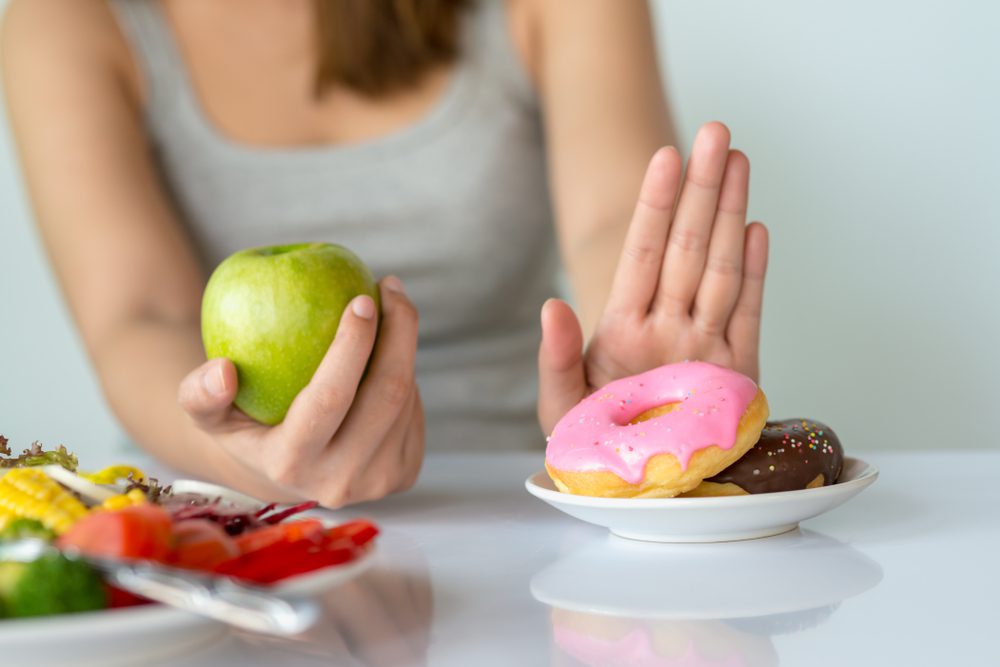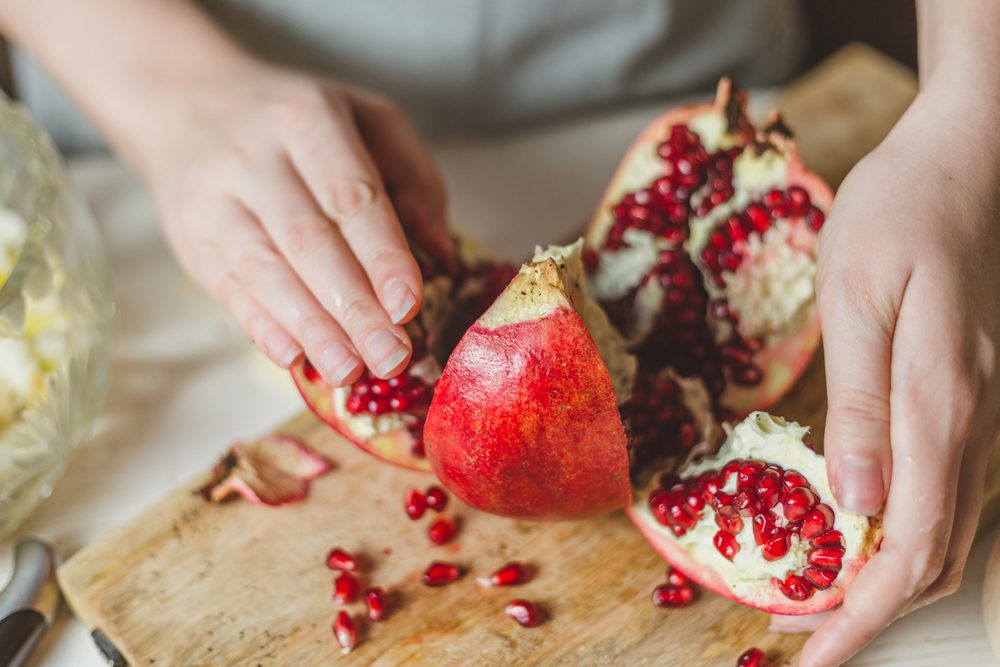Hyperinsulinemia is a serious medical condition, but there are some ways to keep it under control! To lower your insulin levels, you just have to follow some simple rules.
Let’s start with the beginning by explaining (for those who don’t know) what’s insulin. Your pancreas produces and secretes the hormone insulin, which is necessary for both maintaining life and controlling blood glucose (sugar) levels—more precisely, by reducing glucose levels. Hyperinsulinemia, or persistently elevated insulin levels, can cause significant health issues including cancer and heart disease in addition to excessive weight gain.
Insulin resistance, which occurs when cells in our muscles, liver, and fat don’t react to insulin as they should, is typically the cause of hyperinsulinemia. Typically as insulin resistance develops, your body produces more insulin to maintain appropriate sugar levels. If you were told to lower your insulin levels but you don’t know where to start, here are some things you can do:

1. Reduce sugar foods as much as possible
This goes without saying, but the best way to lower your insulin levels is by reducing or eliminating all sugary foods from your diet. As harsh as it may sound, several dishes don’t require added sugar. And because we’re living in a world full of possibilities, there are plenty of healthy sweeteners to help you make your cakes. Also, you can pick ripped fruits for making pies, so you won’t need any added sugar!
2. Go for complex carbohydrates
In most cases, people tend to skip eating carbs because they’re considered bad for their health. But this is nothing but a lie. Let us explain why. While complex carbohydrates play a significant role in a well-balanced diet, refined or “simple” carbohydrates are rapidly absorbed and typically lack fiber and other micronutrients. The bad and processed carbs include pastries and bread, pre-made foods, and white rice.
But there is a way in which you can lower your insulin levels even if you eat carbs. Always, but always go for the healthy ones that can give you energy and keep you satiated for more hours. The best carbs that help you lower your insulin levels and are highly recommended by nutritionists as well are oats, berries, potatoes (especially the sweet ones), and yogurt.
If you find that this is too much, try incorporating a small amount of each into your regular meals one day at a time. Consider having some fruits and grains for breakfast instead of sugary cereals. You may find many recipes online to help you along the way! To find some recipes that can help lower your insulin levels, try searching for keywords like “recipes to lower your insulin levels.”
3. Add apple cider vinegar to your diet
Recent research suggests that using apple cider vinegar after eating, particularly if you have a high-carb meal, may help you avoid insulin and blood sugar rises. The glycemic response to meals high in carbohydrates appears to be improved by consuming 1-6 teaspoons (10–30 mL) of vinegar mixed with water daily. However, we advise you to see your doctor to find out if it’s suitable to eat if you have gastrointestinal problems.
4. Be aware of how much you eat for a meal
If you are looking to lower your insulin levels, it’s also very important to pay attention to how much you eat, not only what you eat. Biologically speaking, depending on the meals you consume, your pancreas releases varying levels of insulin; however, consuming a lot of foods that make your body create more insulin might eventually result in hyperinsulinemia.
This is important for all people who have type 2 diabetes or weight issues. Based on recent studies, it is recommended to try to consume fewer and fewer calories per day to help you lower your insulin levels and also help you reach or maintain a healthier body weight.
…If searching on Google for recipes isn’t exactly your cup of tea, we got you! On Amazon, you can find a book filled with healthy recipes that are perfect for all insulin-resistant patients. It has a bargain price of just $7.99.
5. Try to prioritize physical activity
The key to lowering your insulin levels? Having an active lifestyle. Numerous studies found that people who engaged in at least 150 minutes of light exercise per week had a roughly twice higher risk of metabolic syndrome compared to inactive individuals. Don’t force yourself to do hard exercises; focus on mobility or yoga. A lot of people who have trouble with type 2 diabetes do aerobic exercise.
On the other hand, if you want, you can also do strong exercises that are very efficient at growing muscles and reducing body fat.
6. It might be better to lose some weight if the doctor advises you to
Particularly, an excess of visceral or abdominal fat, sometimes referred to as belly fat, is associated with several health problems. Visceral fat can exacerbate insulin resistance and inflammation, both of which lead to hyperinsulinemia.
But when it comes to weight loss, there’s no method to target visceral fat precisely. You will probably lose visceral fat as well as subcutaneous fat when you lose weight overall since they are related. Speak with your doctor about the most effective weight reduction plan if they have recommended it for you to lower your insulin levels.

7. Get enough rest per night
Make sure you sleep at least 8 hours per night. While it may sound like too much for some people who have trouble falling asleep, this is the best amount of time for the body to complete rest. Furthermore, a lack of sleep can increase issues with insulin!
8. Add herbs and spices to your food
Herbs and spices such as cinnamon, ginger, turmeric, and garlic have been demonstrated to have the ability to reduce insulin levels and improve the flavor of meals. For instance, cinnamon is a tasty spice that is rich in antioxidants that are good for your health. It’s easy to include it in pies and smoothies as a delicious substitute for sugar!
9. Drink more green tea
Besides dieting, it’s also important to include a lot of liquids and make sure you’re hydrated throughout the day. One of the best things that’s been proven to help lower your insulin levels is consuming regular green tea.
Epigallocatechin gallate (EGCG), an antioxidant found in high concentrations in green tea, may be able to combat insulin resistance. Furthermore, it is recommended that you drink green tea if you need to lose weight. You can have up to two cups of coffee a day if you enjoy the flavor.
Takeaway:
Your doctor will probably have a strategy to assist you in reaching your goal of lowering your insulin levels if they have advised you to do so. So, don’t be afraid of making some changes! Getting adequate exercise, cutting back on processed carbohydrates and sweets, increasing your intake of fiber and nutrient-dense foods, and occasionally taking natural supplements like cinnamon and green tea will help you remain on track and eventually meet your goal.
Here at Healthy Reads, we love writing for our readers! That’s why, if you find this article informative, we have another suggestion for you: 5 Diabetes Myths, Debunked (No.3 Might Save Your Life!)


























1 thought on “Doctor’s Advice: Lower Your Insulin Levels By Following These 9 Rules”
Thanks much for the wise and realistic suggestions.
With much regards. Nader